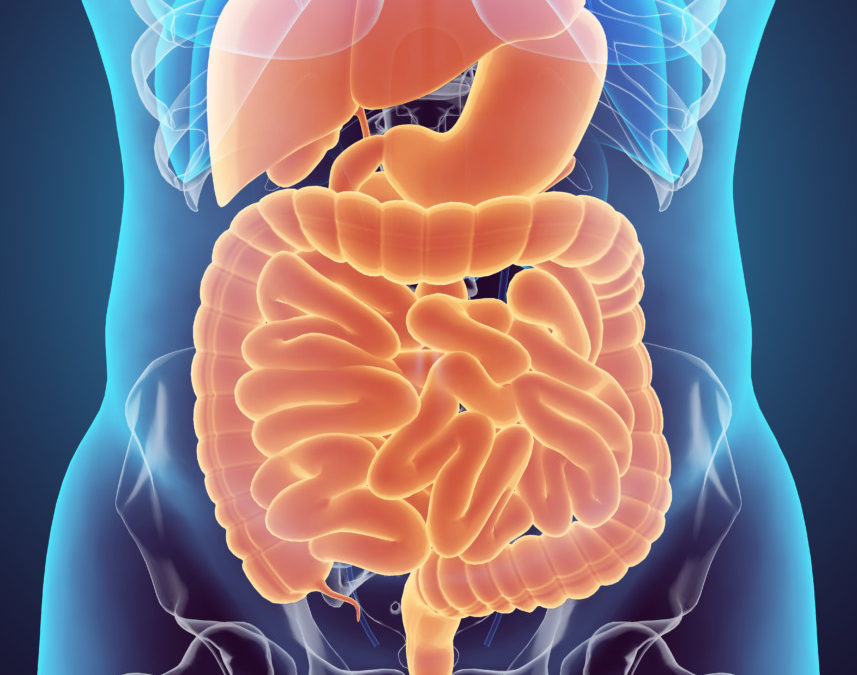
Food Intolerance Primer: What I Wish I Had Known
I’ve walked a long and ugly road with food intolerance, and sadly, it’s not over. I first found that I had a an intolerance to gluten, dairy, and sugar when I was trying to resolve my ovarian cysts, 9 years ago. But I didn’t stay off them, despite the improvement I felt. Wheat crept back in. My husband is a serious dairy fan. It was too hard to adapt my whole family’s diet.
When my son was born, and was very fussy, I removed gluten again, to see if he had a gluten intolerance through my breastmilk. This helped him enough that I quit for a while. But once he was more stable, gluten slipped back in. It’s everywhere and hard to avoid.
But when my health unraveled further in 2013, and I faced daily anxiety attacks and crippling fatigue, I recommitted to observe my food intolerances again. I fully kicked gluten, dairy, and sugar to the curb. I removed these foods and did nothing else to correct my intolerances, and thought I was doing the right thing.
But when I finally got around to running a food sensitivity test, I found that I was reactive to many of the foods I had substituted, and had to remove a whole bunch more! No fair! I had tantrums, for sure. I further found there were whole categories of food that were problematic, and I had to deal with those too.
By the time I was done with this process of discovery, I could no longer eat in a restaurant or at a friend’s home. In addition to the gluten, dairy, and sugar, included on my no list were beef, pork, potatoes, corn, chocolate, coconut, eggs, and almonds.
Good luck eating out for breakfast with this list!
Though removing foods you are sensitive to is an important healing technique, continually removing more and more foods isn’t really a long-term success strategy. With all my self-diagnosing on Dr. Google before I was trained, I missed the mark, and my mistakes cost me the freedom to eat what I want. I’m still fighting this battle.
Allow me to save you some heartache and belly ache: having long-term success with food intolerances requires that we understand WHY they are happening, and that we work on repairing our digestive and immune function so we can live a normal life again.
The unfortunate truth about food intolerances is that many people, and even practitioners who deal with them, it get all wrong. There is so much confusion and misinformation about them. The “avoid forever” strategy works great if you have one or two sensitivities, but not once you have many.
Like always in the Functional health space, we want to understand WHY something is happening so we can fix the problem at the source. So I’d like to clear up the food intolerance landscape, so that you can understand: what are food intolerances? How do food intolerances develop? How can you assess whether you have food intolerances? And will they ever go away?
What is food intolerance?
There are many types of food intolerance. Put simply, a food intolerance is when your body reacts negatively to a food that you eat. What’s not as clear to most people is that there are different types of food intolerances. And properly dealing with your food intolerances demands that you understand exactly which type of sensitivity you have.
Food intolerances are a significant contributor and trigger for uncomfortable and unwanted symptoms. Discovering food intolerances is key to moving your case forward.
In my practice, I see five categories of food intolerance:
- Outright allergy
- IgG food intolerance
- Intolerance due to lack of needed enzymes or other nutrients
- Intolerance due to genetic shortfalls
- Intolerance due to microbiome imbalance.
These different types may co-occur, but understanding which ones are at play is key information to create your strategy.
Outright Allergy (IgE Intolerance)
The food intolerance most people are familiar with are IgE (ImmunoGlobulin E) allergies, which is when you have a very strong, potentially deadly anaphylactic or hives-and-itching type reaction.
Immunoglobulins are immune antibodies that get triggered if you eat or are exposed to something you are reactive to. If you have an IgE intolerance to peanuts or shellfish, you likely found out the hard way that you can’t eat these foods and need to carry an epi-pen in case of accidental ingestion.
This is the type of food intolerance that most allergists check for. Clients often come to me saying, “My allergist tested me for wheat and dairy allergy, and nothing showed up, so I can keep eating them.” Unfortunately, this isn’t really the case. IgE allergy or intolerance is only ONE kind of food intolerance.
IgG Food Intolerance
To explain IgG food intolerance, I need to share a little more about immunoglobulin antibodies. Immunoglobulin antibodies are part of what’s called the adaptive immune system. This part of the immune system is designed to adapt and respond to the environment that we live in, and protect us from incoming pathogens or irritants, like pollen.
Imagine that your immune system tags something unfamiliar with a little post-it note. This post-it note is an immunoglobulin (Ig) antibody. Now the body knows that every time it encounters that non-self material, called an antigen, it needs to create an immune response to destroy and clean up the invader.
An IgG antibody immune response emerges more slowly than the IgE antibody response, and the effects may not be visible for several days. For this reason, identifying IgG food intolerances can be challenging.
The gold standard for understanding this type of intolerance is an elimination diet followed by single reintroductions to watch for reactions. Tracking foods and symptoms using a Food-Symptom diary is the best way to track for delayed food reactions.
Additionally, using IgG Food Sensitivity testing from labs like Oxford Biomedical, Cyrex, or USBiotek can help speed the process of identifying the culprits.
But beyond our symptoms and reactions, we need to understand that IgG food intolerances are an important clue that we need to address and support digestive function.
The main cause of IgG food intolerance is partially undigested proteins sneaking through the gut lining and getting into the bloodstream. These proteins are then tagged as an immune threat. These proteins shouldn’t be in the bloodstream because they should be completely broken down into unrecognizable peptides or amino acids before they get there.
Removing your IgG sensitive foods is important, temporarily. But more importantly, you need to make sure your body is completely digesting its protein, and seal the gut barrier. Otherwise, you will continue to develop worsening IgG intolerance and the immune or autoimmune symptoms that go with it. This process is the seed for autoimmunity.
Intolerance Due to Lack of Needed Enzymes or Other Nutrients
Sometimes, your body just doesn’t have the tools to digest or otherwise break down a component of foods. The most familiar example of this is lactose intolerance. Many people are born sensitive to lactose, while some develop this sensitivity as they age or become adults.
People with lactose intolerance don’t make enough of the enzyme lactase, and so they can’t break down the lactose, which leads to gas and bloating. People in this boat can choose to consume lactose-free dairy products, or try using enzyme supplements with lactase to improve their digestive experience.
Another important type of intolerance in this category is sensitivity to particular chemical components in foods. This can include compounds like salicylates or oxalates, which are normally-occurring, natural chemical components of food.
Vitamin or mineral deficiency can be the reason for this type of intolerance. For example, salicylates require adequate sulfate, magnesium, vitamin B6, vitamin B12, vitamin D, and molybdenum to be processed through the liver. Excess oxalates bind onto minerals like magnesium and calcium. In the absence of adequate magnesium or calcium, the excess can end up being stored in body tissues and cause pain.
This type of food intolerance is often dose dependent. Because many of the foods that contain these compounds are healthy, nutrient-rich foods, we don’t want to throw the baby out with the bathwater!
To understand how to work with dose-dependent food intolerances, imagine a bucket. You can consume up to the amount of food that doesn’t trigger a response, or up to the amount our body has the resources to manage. When you eat too much, your bucket overflows and you experience symptoms.
You want to reduce the amount you eat to below your threshold so you don’t overflow your bucket. You should only remove the particular foods that are most reactive, while simultaneously supporting the body’s natural ability to process them properly.
Intolerance Due to Genetics
Some people have genetic SNPs that cause their body to be less efficient at processing certain compounds for detoxification or elimination. Salicylate intolerance may be evidence of this type of intolerance.
Salicylates require sulfates to break down via the liver. The SUOX gene converts sulfites to sulfates, and this reaction requires certain nutrients as co-factors. If you have certain copies of this gene, you may be less efficient at generating the sulfate you need to break down and excrete salicylates.
Understanding how to work with this kind of a defect often comes slowly, if you have struck out with other types of interventions. Genetic results from a company like 23andme or Ancestry can be run through an interpretation software like StrateGene and then reviewed with someone knowledgeable about genetics.
Intolerance Due to Microbiome Imbalance
Finally, food intolerance can be driven by a microbiome imbalance. Infections with parasites, overgrowth of normal or pathogenic bacteria, or yeasts and fungus can wreak havoc on digestive function.
These infections can dramatically increase leaky gut, which can increase IgG food sensitivities. Overgrowth of the wrong type of bacteria, or of bacteria in the wrong place can compromise the body’s ability to tolerate certain classes of carbohydrates. This is often the reason for a FODMAP sensitivity, and a low FODMAP or Specific Carbohydrate Diet may help. (FODMAPs are foods with particular types of starches).
Not having the right kind of bacteria can impair your body’s ability to break down oxalates.
Having overgrowth of bacteria that are histamine producers can be part of a histamine intolerance.
Food intolerance isn’t always because of microbiome imbalance, but it is often connected. If dysbiosis is part of the equation, this needs to be addressed alongside food removals, reintroductions, and rebuilding or restoring a proper gastrointestinal.
Don’t Forget About Sensitivities to Food Additives
I can forget to bring this category up, because I have eaten a preservative- and chemical-additive-free diet for my entire adult life (20+ years and counting), but many people are intolerant to food additives. Things like artificial colors, flavors, preservatives, hydrogenated fats, processed ingredients, and chemical ingredients you can’t pronounce are anti-nutrients and best left off your plate for good.
If you are currently eating a “Standard American Diet,” and eat a lot of pre-packaged, processed, canned, frozen, and pre-made foods, you are likely ingesting many substances your body doesn’t know what to do with. If this is you, you may want to begin by removing processed foods, and eat a real food diet.
The simple way to avoid food additives is to eat real food: actual vegetables, fruits, grains, legumes, nuts, seeds, meat, fowl, fish, and real dairy. Organic food is uncontaminated with pesticides and herbicides. When we stick to these foods, we remove many of the irritants that our body may be reacting to. This step should happen before any further elimination or special diets.
Managing and Healing Food Intolerance
I hope you can see now that understanding food intolerance is actually quite complex. It’s essential to understand what type of intolerance you are dealing with before you begin removing wide categories of food.
Elimination diets are one of our biggest and most important tools to use when trying to understand food sensitivities. But elimination diets can backfire, especially drastic and lengthy ones, like the keto-adapted or autoimmune paleo diets. Maintaining a very restrictive elimination diet for the long term can lead to nutrient deficiencies, and can also negatively affect our microbiome.
An important first step is to use a Food-Symptom diary to track what you’re eating and your symptoms to see if you can identify any obvious culprits. For most people, I recommend eliminating common allergens to see if they are culprits in your symptoms, and this is the part that everyone understands.
But even more important is understanding what to do next. Healing from food intolerances depends on which type of intolerance you have, but generally, you need to:
- Support robust digestive function
- Do the proper elimination diet to remove offending foods ( you will reintroduce them in the future to test tolerance if not a severe allergy.)
- Restore good intestinal barrier function
- Improve nutrient status
- And restore a healthy microbiome
Restoring proper digestive function is absolutely essential. Otherwise, the conditions that allowed for intolerances will continue to be a factor, and the intolerances are likely to get worse.
An elimination diet follows this basic support work. In my practice I have everyone eliminate gluten, dairy, and sugar, and sometimes I have them eliminate soy, corn, and eggs. Specific eliminations become much more individualized after that. Refer to the handouts I mentioned earlier to try and assess what type of sensitivity you may be experiencing.
Beyond these top six foods, any other food can be a culprit, but I don’t necessarily want to ask people to drastically change their diet, at least not at first. Why?
Our microbiome, or the community ecology of bacteria and yeasts that live in our digestive tract are accustomed to what we are eating now. Making a sudden, 180-degree dietary shift selects for a different microbiome.
This may be what you need to happen if part of your health challenge is due to dysbiosis, or an imbalance in your microbiome. The idea is that making a big change makes space for the good guys, kind of like rototilling your garden in the spring to make room for your veggies.
But after all my years of experience, as a food intolerance patient, and now as a practitioner, I am questioning the wisdom of these dramatic shifts. We want to preserve the good guys we have, while making the terrain inhospitable to the not-so-friendly bacteria.
Rebuilding a healthy gut ecosystem from scratch is a lot harder than supporting and working with what you’ve got. Your undisturbed gut ecosystem is a bit like an old-growth forest. If you clear cut, the second growth is going to take a LONG time to even remotely resemble the diversity and beneficial complexity of an old-growth forest. I think it’s best to work with what you have and not be too aggressive.
Also, when you go down the road of eliminating things left and right, you may just keep going, until you paint yourself into a corner with just a few foods. I had a client that was down to just two foods. And I myself was down to about 20-30 foods at one point.
Therapeutic elimination diets, like the Autoimmune Paleo, Specific Carbohydrate Diet (SCD), low FODMAP diet, or low histamine diet are important, but these diets are never meant to be long-term solutions, and it’s best to ease into them gradually, while simultaneously supporting your positive gut flora.
Therapeutic diets are designed to help lower your immune burden temporarily while you implement a longer-term strategy of repair and restoration on your gut and microbiome, so that you can re-invite a wide variety of nutrient-dense foods. That is, with the exception of gluten and sugar, for most people!
Determine Your Intolerances
The tried and true way to get clear on your intolerances is by doing an elimination diet, followed up with one-by-one reintroductions of foods while using a Food-Symptom Diary, to test for reactions.
Not only does this method give you concrete data based on your own n=1 science experiment, you become quite the expert in understanding what you need to do, and what will happen if you invite your trouble foods into your life.
The other way to assess for food sensitivities is with blood testing. There are a couple of different options:
Mediator Release Test (MRT)
The MRT test uses your blood sample to measure your blood volume before exposure and after exposure to a potential food trigger. It doesn’t test for a specific antibody, but a change in blood volume on exposure indicates that there is some kind of mediator release at the cellular level to that food.
Foods that react above a threshold should be removed for a period of months while working on gut and microbiome healing.
IgG Food Sensitivity Testing
IgG testing tests for IgG antibody reaction to a number of foods. Three common labs for running this kind of testing are Cyrex Labs, Great Plains Laboratories, and US Biotek. These labs screen for IgG reactions to 150 or so foods, and Cyrex also has several specialized screens for gluten and gluten-cross-reactive foods.
It’s easy enough to see what you’re reacting to, but the understandable question is, what do I do with this information? As with the MRT, the IgG panels provide a starting place to direct your efforts to remove foods, while you focus on restoring and repairing your gut, microbiome, and calming your immune overreaction.
Will I Ever Recover from Food Intolerance?
I had a young client whose allergist told them that they would grow out of their intolerances. Some people do report being able to reintroduce foods they previously reacted to without any problems.
For most of us, the road to successful reintroduction and tolerance is a much longer road. We remove the foods that aren’t working, but then we need to consider WHY the terrain isn’t suitable. We need to do the restoration work to create a functional digestive and detoxification system that works, and THEN we can work on reintroducing foods, and maybe even be successful.
Whether you can recover depends on the severity of your gut damage. If it’s in deep distress, it could take years to repair to the point where you can tolerate some foods again. I have only been able to reintroduce a few of the foods I removed, and I keep working toward recovery.
So the short answer is, it depends. But in my opinion, it’s not likely to happen just by taking a break and then trying to reintroduce the food. OR growing out of it. There is more proactive work needed on your part to create remission and healing.
Tools to Heal and Seal the Gut to Reduce Food Intolerances
There are certain nutrients that the gut needs to do its job effectively. Here is a general list to play with, in addition to removing offending foods.
Visit my FullScript online dispensary to shop for these and other supplements.
Probiotics: Most people with food intolerances also have an imbalance in their microbiome. Encouraging a proper microbiome is an important step and including probiotic supplements or foods may help. However, if you find that probiotics make you feel worse, you may have other issues to address first, such as SIBO.
Stomach Acid: IgG food intolerances are partly created by proteins sneaking through a leaky gut. Ensuring adequate stomach acid makes sure proteins are thoroughly and complete broken down to their constituent parts (amino acids and peptides) before they make it through the gut wall. In these forms, they are not recognizable as anything dangerous by the immune system.
Stomach acid also has many important functions, including preventing infection with pathogens, enabling the absorption of iron and vitamin B12, helping digestive secretions release, and helping food move through the intestines.
Supporting stomach acid can be as simple as including a small amount (1/4-1/2 tsp) of apple cider vinegar or lemon juice in a small amount of water before meals, or by using a Betaine Hydrochloric Acid supplement.
Digestive enzymes: Enzymes help break food down and transport it into the cells. As with the stomach acid, providing enzymes can help ensure complete digestion to prevent food intolerances. Incorporate enzyme capsules, chewables, or liquid with each meal and snack.
L-Glutamine: An amino acid that is used extensively by gut tissue for repair. Titrate up to a dose that feels comfortable, starting at 1 g, and up to 9 grams per day.
Zinc: Especially zinc picolinate helps repair the lining of the gut. Zinc is best consumed with food.
Vitamin A and D or fermented cod liver oil: These two nutrients are key antioxidants and repair enhancers for the gut mucosa.
Colostrum: When we are born, our guts are normally and naturally permeable. Colostrum is the first mother’s milk a baby receives after birth, and its function is to seal the gut, and to provide immune protection. If you’re not dairy sensitive, colostrum can be a game-changer for gut barrier function.
Chew food thoroughly, and relax while eating: Not all digestive supports are foods or supplements. Good digestive function relies on a feeling of relaxation. Digestive function declines or stops working if we eat when stressed.
Bone broth, gelatin, or collagen: All of these help repair the lining of the gut. Tolerance may vary, so test carefully.
Aloe vera juice, deglycyrrhized licorice (DGL), slippery elm, and marshmallow root: Soothing and healing for the gut lining.
Things to Avoid
Unnecessary medications, including OTC meds (NSAIDs, and birth control pills, e.g.): Many medications have a negative impact on the gut microbiome and intestinal permeability. Stick to medications that have a high level of clinical and personal benefit with low risks.
Gluten: Gluten increases intestinal permeability for everyone, no matter whether you are gluten sensitive or not. Avoiding gluten is a huge priority for resolving food intolerances.
Dairy & sugar: These commonly inflammatory foods are best avoided while repairing and restoring digestive and immune function. They can be retested for sensitivity after good work has been done, and maybe reintroduced.
Antacids: Antacids reduce stomach acid, which we need to protect us from food intolerances.
Antibiotics, if at all possible to avoid: Antibiotics drastically affect the microbiome in the gut. Some microbiome shifts can lead to food intolerances, or make existing ones worse. Of course, don’t avoid necessary treatment, but avoid them if possible.
Immunizations during the repair period: Metals increase intestinal permeability, and there are usually metals, especially aluminum, as adjuvants (immune stimulators) in vaccines.
Stress: Stress increases intestinal permeability, and should be actively managed and reduced while you are working to repair food intolerances.
When you’re ready for some support and help sorting out your food intolerances, Schedule a free Assessment Session with me to hear my assessment of where you are and what kind of improvement may be possible for you.
When you’re ready to hear more about the 7-Step process I use to help clients get beyond their symptoms once and for all, download your free copy of Roadmap to Recovery: How to Move Beyond Your Symptoms and Create a Personalized Plan to Restore Your Health.




